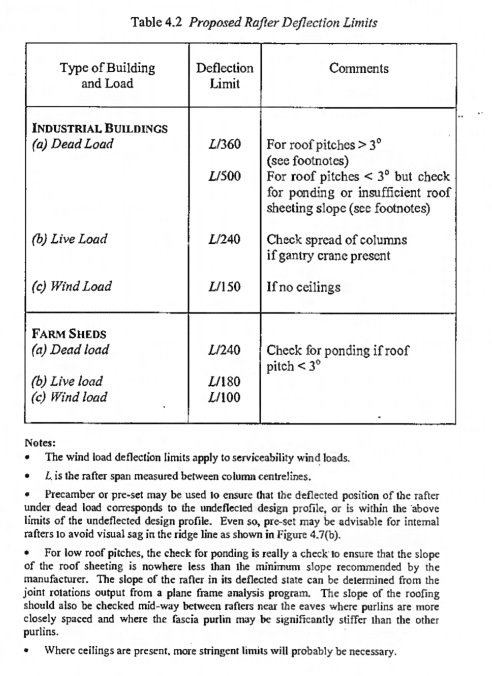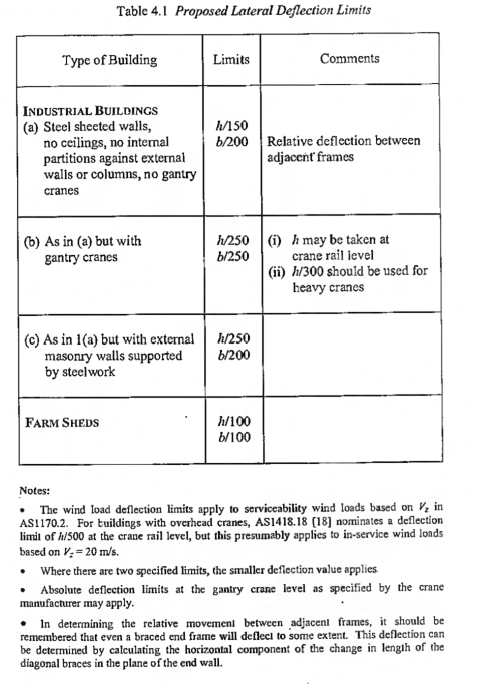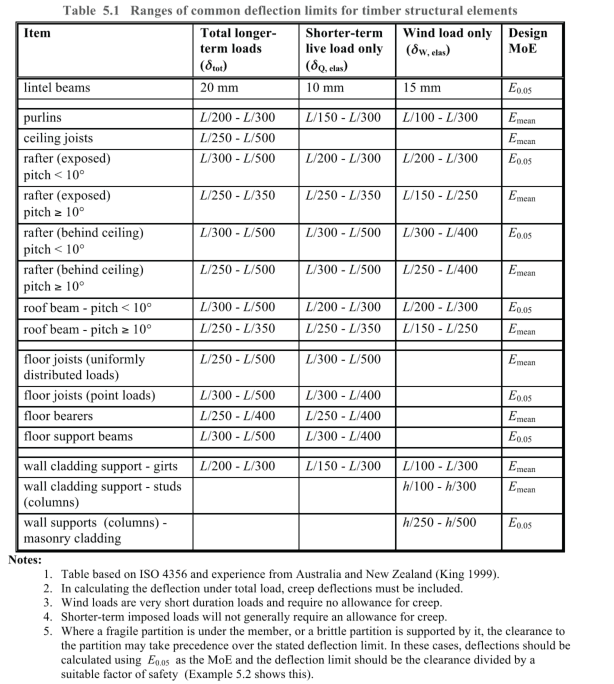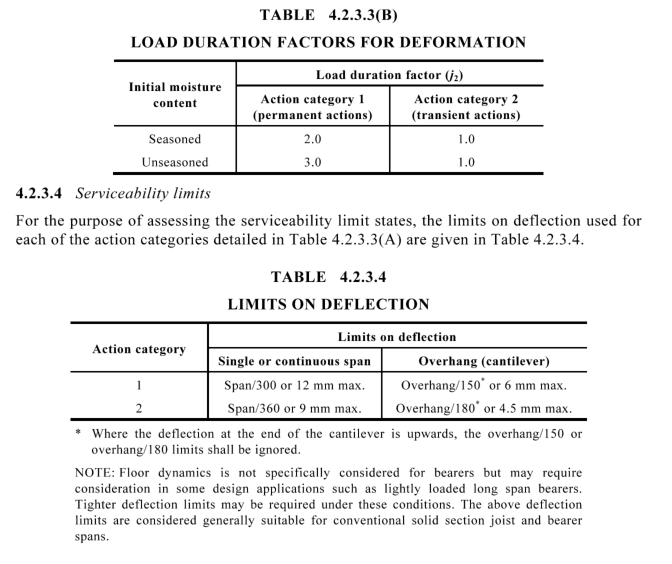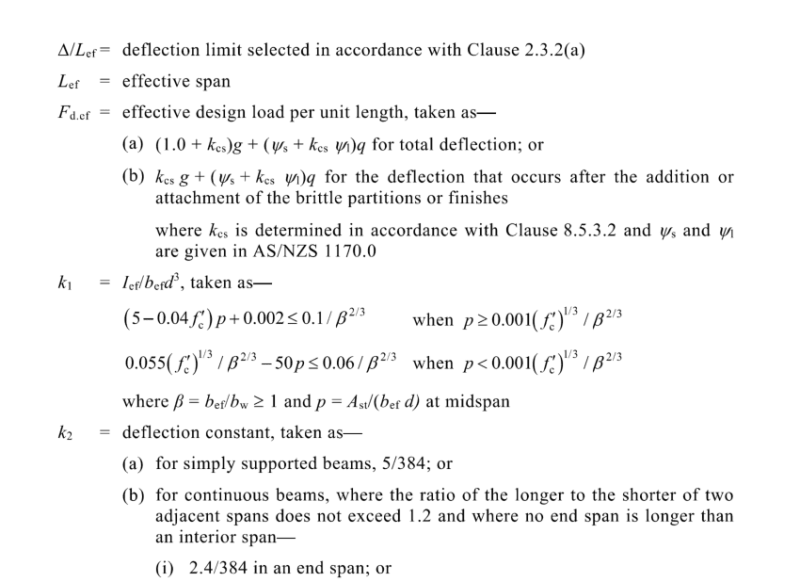James_Gleeson
Structural
Hey guys,
Guidance for deflection limits seems to be extremely scarce, even when considering the suggested deflection limits provided in AS1170-2020 Appendix C. Also, when comparing limits and load combinations adopted by manufactures, they seem to be contradictory even with things that you would assume would be so standardised throughout the industry such as floor framing supporting flexible flooring (carpet, flexible underlay etc) and floor framing supporting brittle finishes (tiles, grout etc)
Does anyone have a more extensive summary of reasonable deflection limits and which load combinations they apply to?
What is reasonable for the floor framing for the following load combos:
Flexible floor finish
- Short term - G + ΨsQ
- Long term - G + ΨlQ
- Live - Q
Brittle floor finish
- Short term - G + ΨsQ
- Long term - G + ΨlQ
- Live - Q
In trying to rationalise everything I was thinking of settling for short and long term for flexible finishes being span/300 and for brittle finishes being span/500 or maybe 600 (However some manufacturers adopt span/360 based off AS 3958.1—2007 guide to installation of ceremic tiles which confuses me though). I think Live by itself can be limited to span/360?
Would be grateful for any feedback because I am starting to go crazy.
Guidance for deflection limits seems to be extremely scarce, even when considering the suggested deflection limits provided in AS1170-2020 Appendix C. Also, when comparing limits and load combinations adopted by manufactures, they seem to be contradictory even with things that you would assume would be so standardised throughout the industry such as floor framing supporting flexible flooring (carpet, flexible underlay etc) and floor framing supporting brittle finishes (tiles, grout etc)
Does anyone have a more extensive summary of reasonable deflection limits and which load combinations they apply to?
What is reasonable for the floor framing for the following load combos:
Flexible floor finish
- Short term - G + ΨsQ
- Long term - G + ΨlQ
- Live - Q
Brittle floor finish
- Short term - G + ΨsQ
- Long term - G + ΨlQ
- Live - Q
In trying to rationalise everything I was thinking of settling for short and long term for flexible finishes being span/300 and for brittle finishes being span/500 or maybe 600 (However some manufacturers adopt span/360 based off AS 3958.1—2007 guide to installation of ceremic tiles which confuses me though). I think Live by itself can be limited to span/360?
Would be grateful for any feedback because I am starting to go crazy.

